 |
 |
 |
| |
Senescence-Associated β-Galactosidase Activity and Other Markers of Senescence in Human Peripheral Blood Immune Cells During Healthy Aging and HIV-Infection
|
| |
| |
10th International Workshop on HIV and Aging, October 10-11, 2019, New York
Reported by Jules Levin
Hannah K. Dewald1, Ricardo I. Martinez-Zamudio2, Themistoklis Vasilopoulos2, Shobha Swaminathan3, Utz Herbig2, Patricia Fitzgerald-Bocarsly1
1. Department of Pathology, Immunology, and Laboratory Medicine, Rutgers New Jersey Medical School Newark, NJ, USA
2. Department of Microbiology, Biochemistry and Molecular Genetics, Rutgers New Jersey Medical School-Cancer Center, Newark, NJ, USA
3. Department of Medicine, Rutgers New Jersey Medical School, Newark, NJ, USA
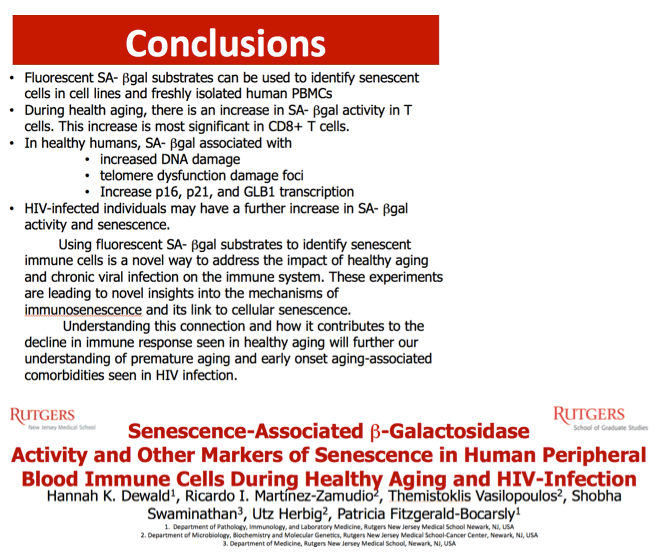
program abstract
Senescence-associated beta-galactosidase activity and other markers of senescence in human peripheral blood immune cells during healthy aging and HIV-Infection
Dewald H1, Martinez-Zamudio R2, Vasilopoulos T2, Swaminathan S3, Herbig U2, Fitzgerald-Bocarsly P1
1Rutgers New Jeresy Medical School Department of Pathology, Immunology, and Laboratory Medicine, Newark, United States, 2Rutgers New Jeresy Medical School Department of Microbiology, Biochemistry And Molecular Genetics, Newark, United States, 3 Rutgers New Jeresy Medical School Department of Medicine, Newark, United States
Aging is associated with a decline in immune system performance termed "immunosenescence" which leads to less robust immune responses including decreased cytokine production and simulation of the adaptive immune response. Cellular senescence is characterized by a persistent cellular growth arrest, a failure to respond to stimuli, and an overall loss of cellular function. However, whether immune cells undergo cellular senescence in vivo and whether cellular senescence plays a role in immunosenesence remains controversial due to the lack of specific markers that can reliably identify these cells in peripheral blood. Freshly isolated human peripheral blood mononuclear cells from healthy younger (22-26 y.o.) and older (56-65 y.o.) donors were fluorescently labeled for senescence-associated β-Galactosidase (SA-βGal) activity, anti-CD3, and anti-CD8 and sorted using fluorescence-activated cell sorting. Blood was collected from HIV-infected donors following IRB approved protocol and labeled for SA-βGal activity. Flow cytometric analysis was utilized to identify CD14+ monocytes, CD3+ CD4+ T cells, and CD123+ BDCA2+ plasmacytoid dendritic cells (pDC). qRT-PCR was used to quantify p16INK4a and cytokine production and immunofluorescence microscopy was used to measure DNA damage response foci. We detected a significantly higher percentage of CD8+ T cells with high SA-βGal activity in the older vs. younger cohort. CD8+ T cells that were sorted for high SA-βGal activity displayed characteristics of senescent cells, including increased levels of transcripts for GLB1, p21, p16INK4a, and inflammatory cytokines. Additionally, analysis of sorted SA-βGal positive and negative CD8+ T cells by immunofluorescence microscopy revealed that SA-βGal positive cells displayed significantly greater numbers of DNA damage response foci and p16INK4a protein levels. SA-βGal activity was also increased in CD8+ T cells, CD4+ T cells, monocytes, and pDC from an older, HIV-infected donor. Older individuals display increased in SA-βGal activity in several blood immune cell populations, most consistently in CD8+ T cells. Additionally, we observed increase SA-βGal activity in CD8+ T cells, CD4+ T cells, monocytes, and pDC from an HIV- infected donor. This indicates that HIV infection can induce cellular senescence in several immune populations. Sorting cells based on high SA-βGal activity allowed us to further characterize these cells for other senescence markers. The presence of p16INK4a and nuclear DNA damage response foci, which indicate double stranded DNA breaks or telomere dysfunction, along with the production of inflammatory cytokines clearly demonstrate that SA-βGal activity is a strong indication of cellular senescence in blood immune cells. SA-βGal activity can be leveraged to further identify senescent immune cells and elucidate cellular senescence's role in immunosenesence. Understanding this connection and how it contributes to the decline in immune response seen in healthy aging will further our understanding of premature aging and early onset aging-associated comorbidities seen in HIV infection.
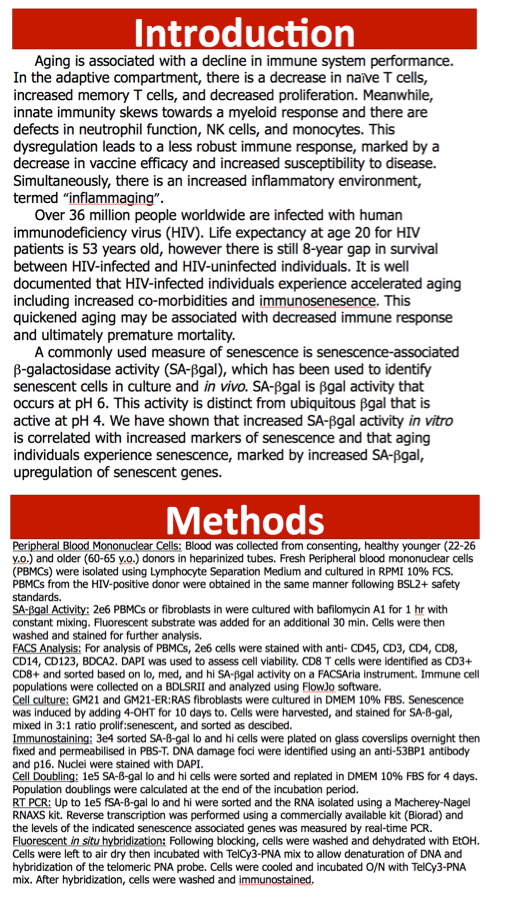
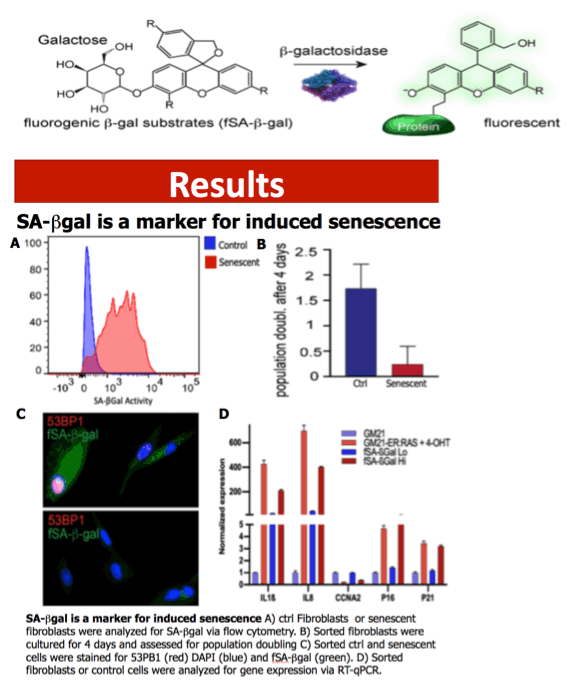
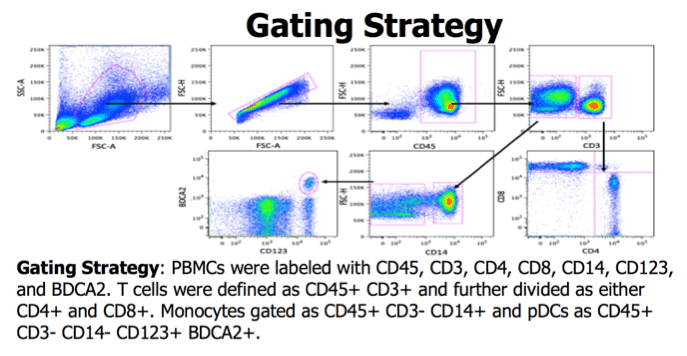
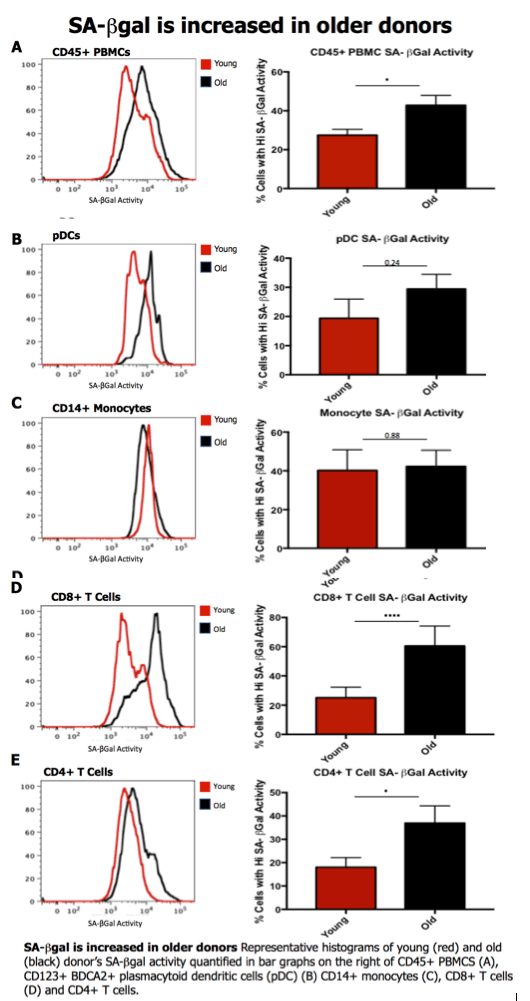
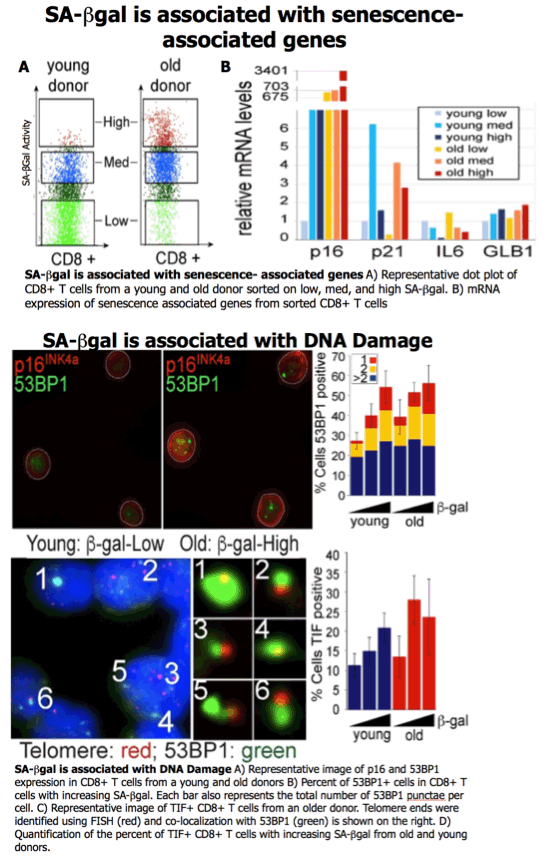
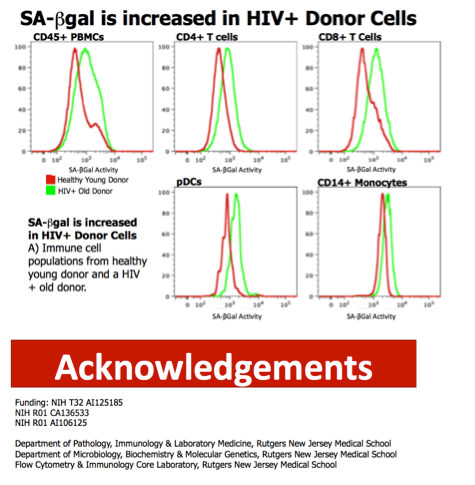
|
| |
|
 |
 |
|
|